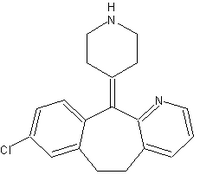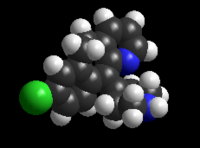The FDA has recently approved Clarinex-D 24 Hour (desloratadine 5 mg and pseudoephedrine sulfate USP 240 mg) extended release tablets to treat nasal and non-nasal symptoms of seasonal allergic rhinitis in patients 12 years of age or older. There were two 2-week trials, both demonstrating significantly greater efficacy of Clarinex-D 24 Hour for allergic rhinitis, compared to desloratidine or pseudoephedrine, which led to FDA approval of this combination 24-hour medication. Clarinex-D 24 Hour also provided significantly greater relief from nasal congestion compared to desloratadine.
Clarinex-D 24 Hour uses a Gel Control mechanism which provides controlled release of the pseudoephedrine throughout the day thus allowing patients to wake up symptom free.
Clarinex-D 24 Hour should be avoided in patients with narrow angle glaucoma, severe hypertension or heart disease, urinary retention, and in patients receiving therapy with monoamine oxidase (MAO) inhibitors. It should be used in caution with impaired hepatic function or renal function, hypertension, heart disease, hyperthyroidism, diabetes mellitus, or prostate hyperplasia.
The side effect profile of Clarinex-D 24 Hour is similar to that of desloratidine alone; however, incidence of anticholinergic symptoms such as dry mouth may be increased. Additionally adverse effects secondary to pseudoephedrine including cardiac arrhythmia and central nervous system insult must be taken into consideration.
COPYRIGHT 2005 Journal of Drugs in Dermatology, Inc.
COPYRIGHT 2005 Gale Group



